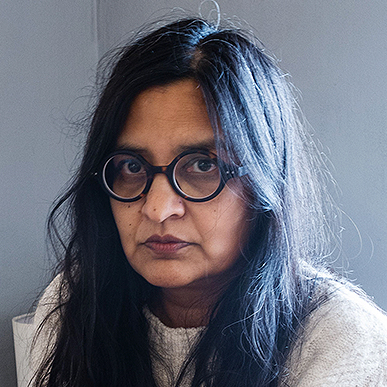Pamila Gupta: Joburg’s pools in a time of South African infrastructure


Ataya: HUMA Interdisciplinary Seminar Series

Bio: Pamila Gupta is a Research Professor at the University of the Free State (UFS) in Bloemfontein, South Africa, affiliated with the Centre for Gender and Africa Studies (CGAS). She was formerly a Full Professor based at WiSER at the University of the Witwatersrand (2008–2022). She holds a PhD in Anthropology from Columbia University. Her research and writing interests include Portuguese colonial and Jesuit missionary history in India; diasporas, islands, tourism, heritage and design in the Indian Ocean; photography, tailoring and visual cultures in East Africa; and architecture, infrastructure, and affect in South Africa. She is the co-editor of Eyes Across the Water: Navigating the Indian Ocean (with Isabel Hofmeyr and Michael Pearson, UNISA 2010) and author of three monographs: The Relic State: St. Francis Xavier and the Politics of Ritual in Portuguese India (Manchester UP, 2014) and Portuguese Decolonization in the Indian Ocean World: History and Ethnography (Bloomsbury Academic, 2019); Heritage and Design: Ten Portraits from Goa (India) (Cambridge UP, 2022).
Topic: What follows in this draft paper is a series of contemplations or rather watery reflections on Johannesburg’s swimming pools which, for some residents (including myself), are the closest thing to an ocean we have in this dry landlocked urban metropolis. We also don’t consider their design; more often than not, they are round, in a figure 8 or consistently popular are kidney-shaped ones. Here I want to think about Joburg’s pools as voluptuous, as inciting a range of emotions, from wondrous to increasingly endangered (Elias 2019), as capturing an affect of sea and sky in one, and a corporeal and submerged sensorial feeling of wetness, something I have written about elsewhere in relation to the monsoons (Gupta 2021). In other words, I want to reflect on them as a form of infrastructural affect, as both a ‘form of landscape’ (Abbas 2010) that can be mapped in Johannesburg and its surrounds (Northern suburbs, Southern suburbs, and townships) in relation to its apartheid past, and as a spatial and temporal imaginary that speaks to the city’s dryness, one which constantly catches in one’s throat, eyes, skin, and hair and is inescapable. Jumping into a pool on a hot, lazy Joburg day reminds us of what it feels like to cool down one’s body temperature and be surrounded by the colour blue (Meloy 2002, Solnit 2005, Taussig 2009) even if it is fleeting, brief, and temporary. Swimming pools provide water oases in Global South cities such as Johannesburg, yet they are as ominous as they are gentle and tranquil and portend our dry futures in an era of the Anthropocene and pending water crises, in which eerily empty, hollowed out, rusted, repurposed and abandoned (with the non-human taking over) swimming pools are increasingly a sign of ‘infrastructural time(s).’